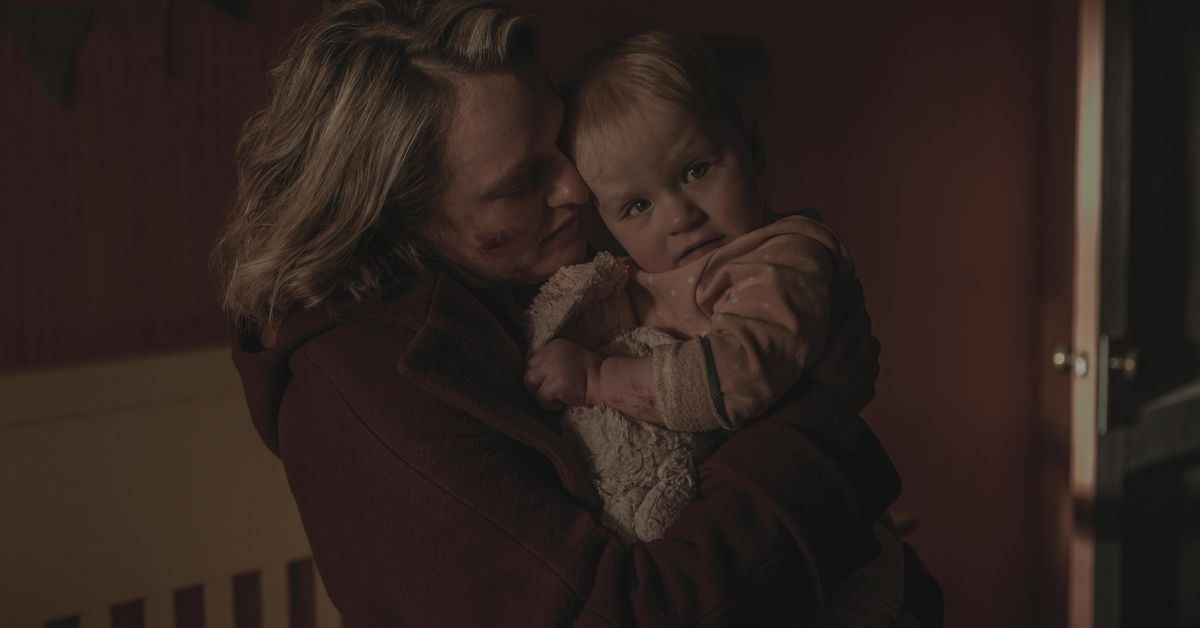The remarkable thing about The Handmaid’s Tale’s fourth season, which wrapped up with a bloody and beautiful finale Wednesday, is how completely it snaps a sometimes-wayward story back into focus.
Season four does something I’ve never quite seen a TV show do, which is that it tells a story that retroactively makes sense of its dour second season and scattered third season but also proves how much the storytelling in those seasons failed to explain what The Handmaid’s Tale was trying to do.
As everyone around her attempts to have a nice, peaceful, “normal” life, she keeps insisting they look back at what happened to them, to the degree that some of her friends and loved ones start to seem a little bit exhausted by her.
Most of all, it’s about telling yourself things are okay because your circumstances have changed while the lives of millions of others remain as terrible as they were before.
The Handmaid’s Tale has always made sense to me on a level I couldn’t quite explain.
By the end of season four, June has not only survived all the horrors of being a handmaid in Gilead but also several explosions, tense court hearings, and a long ride in a refrigerated train car meant to carry milk.
The former was in the decision to depict what happened to June as vaguely ordinary, hewing closely to the 1985 Margaret Atwood novel of the same name that served as its source material.
The series debuted in the early months of the Donald Trump presidency, in a world where a lot of those very women with access to privilege and a progressive streak were questioning just how little that access mattered when the country was electing a president who had openly bragged about committing sexual assault.
The Handmaid’s Tale also commodified the suffering of women who didn’t have access to privilege, providing a kind of proxy access to it for richer, whiter women who struggled with structural misogyny, to be sure, but weren’t grappling with structural racism or classism.
The finale features the image of Fred Waterford’s corpse hanging from a noose in front of a wall on which the women who killed him have spray-painted “Nolite te bastardes carborundorum.” The Latin phrase from Atwood’s book translates to “Don’t let the bastards grind you down,” and the TV show has turned it into a marketing slogan.
I needed to be safe.” June isn’t a survivor of child abuse; the abuse she has lived through occurred when she was an adult, and it came at the hands of what had been her government.
She’s going to be stuck in Gilead forever because of how deeply scarred she is psychologically — and if she has to live there, then she needs to make sure the rest of the world watches it burn.
At times, season four seems like it’s adapting the consistent Twitter invocation from the 2020 election: Once Trump is out of office, we can’t just go “back to brunch.” This shorthand was always at least a little misogynist — “going to brunch” is vaguely coded as an activity that women enjoy in American society, so the “we” is too often assumed to be vaguely feminine — but there was something true about it all the same.
But that return to normalcy would mostly be reserved for people whose suffering under any president would still be less than that of others.
What I am trying to say is that The Handmaid’s Tale, because it is positioned as a show about the very crowd being mocked with the “back to brunch” gibes, is accidentally well-suited to discussing how uneven normality really is.
June’s storyline in season four is all about escaping a traumatic situation to arrive at something resembling normalcy, only to be so marked by the traumatic situation that nobody will listen to you when you keep yelling about it.
Yes, it was terribly contrived to have June be so savvy at manipulating the geopolitical situation between Gilead and Canada that she could secure an audience alone with Fred in the middle of nowhere — the better for her and many other women wronged by Gilead to beat him to death — but god, was it beautiful to see anyway.
The show would nestle, say, the soapy fun of June’s inability to decide between the fathers of her two children right alongside stories about how hard it was for the children she liberated from Gilead to adjust to their new lives in Canada when all they’ve ever known was oppression.
You should probably read a plot summary of the season three finale, but it’s fascinating how little actually happened between the end of season two and the end of season three, outside a couple of characters escaping to Canada.
June, even when she does the right thing, even when she does the satisfying thing, passes her pain and despair to others.
Multiple times during the season finale, director Liz Garbus levels up The Handmaid’s Tale’s close-up game so much that June’s face is no longer a full face but a collection of parts — eyes, lips, chin, brow.
The reason I can say this show operates with the emotional logic of an abuse survivor is that I am one, and the reason it speaks to me so deeply is rooted in how badly I want the world to see how much I’ve been hurt.
Financial contributions from our readers are a critical part of supporting our resource-intensive work and help us keep our journalism free for all.
